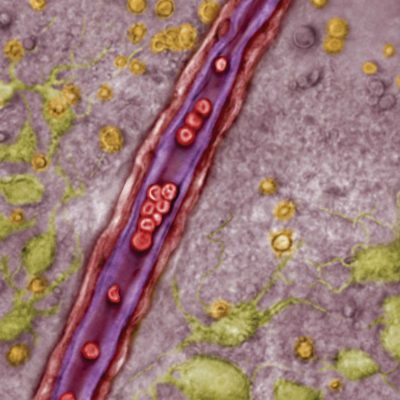I have worked on molecular mechanisms controlling central chemoreception–the mechanism by which brain regulates breathing in response to CO2/H+– for more than fifteen years. As a graduate student, I used electrophysiological techniques and fluorescent imaging to explore mechanisms by which changes in CO2 and O2 concentrations affect excitability of respiratory neurons in slices from adult rats. As a postdoctoral fellow at the University of Virginia, I continued investigating mechanisms of chemoreception using voltage-clamp electrophysiology and molecular approaches. During this time I made a number of advances in the field including identification of chemosensitive neurons in a brainstem region known as the retrotrapezoid nucleus (RTN). The discovery of this specialized group of chemoreceptors challenged more recent views that chemoreception is an emergent property of the respiratory network and facilitated the breakthrough finding that a severe form of sleep apnea called congenital central hypoventilation syndrome appears to be caused by disruption of RTN chemoreceptors. As an independent investigator, I went on to discover that RTN astrocytes also control of breathing. Specifically, we found that RTN astrocytes sense CO2/H+ by inhibition of Kir4.1 channels and release ATP which serves as a paracrine signal to directly activate nearby chemosensitive neurons. This finding established RTN astrocytes and Kir4.1 channels as integral components of the respiratory network. We are building on these discoveries by determining whether loss of Kir4.1 channel function in astrocytes contributes to respiratory dysfunction in Rett syndrome. We are also exploring the possibility that purinergic signaling provides specialized control of arteriole tone in the RTN in a manner that contributes to respiratory behavior. In separate work, we also found that KCNQ channels regulate activity of chemosensitive RTN neurons and we are currently testing the possibility that these channels serve as therapeutic targets for respiratory problems associated with ischemic stroke.

